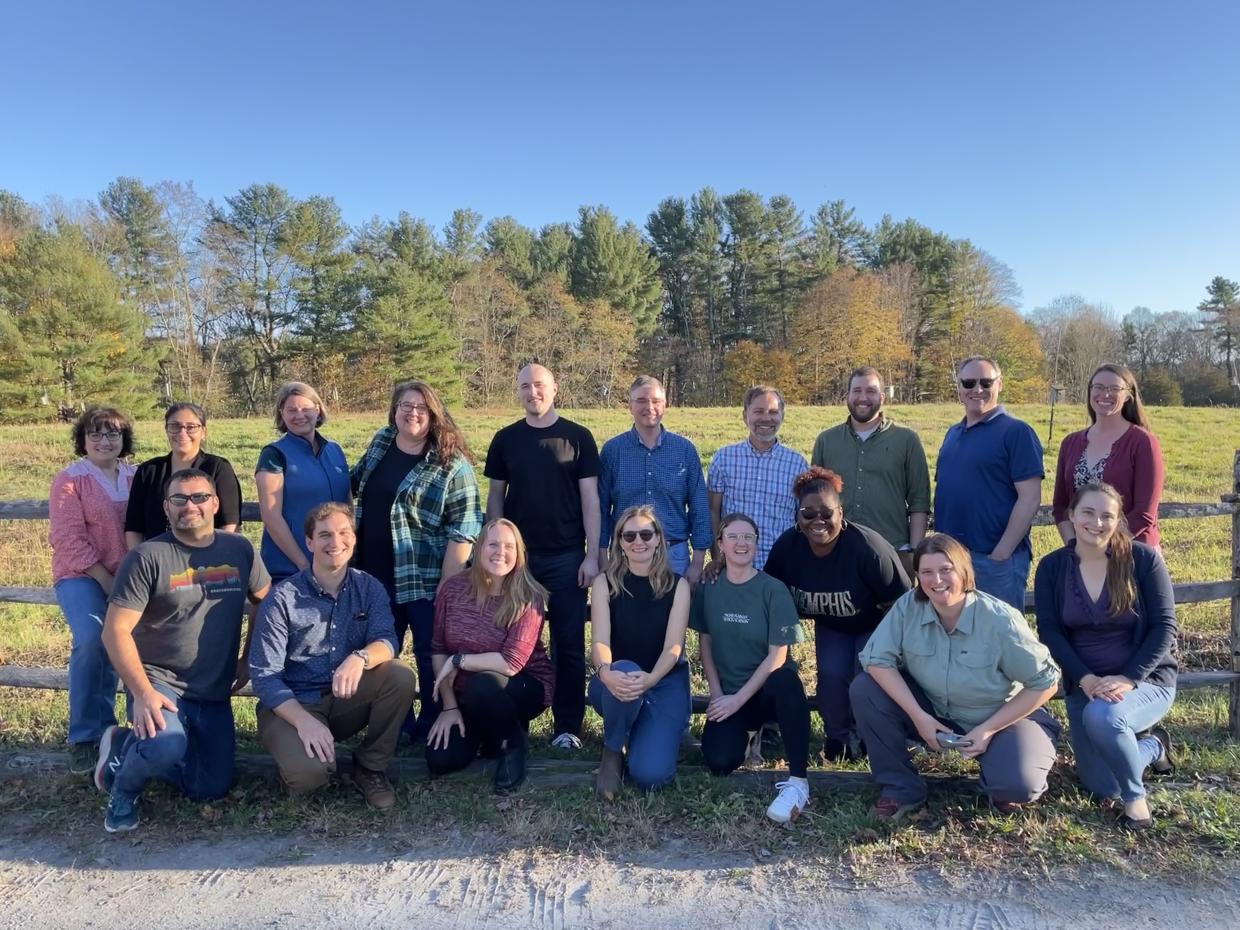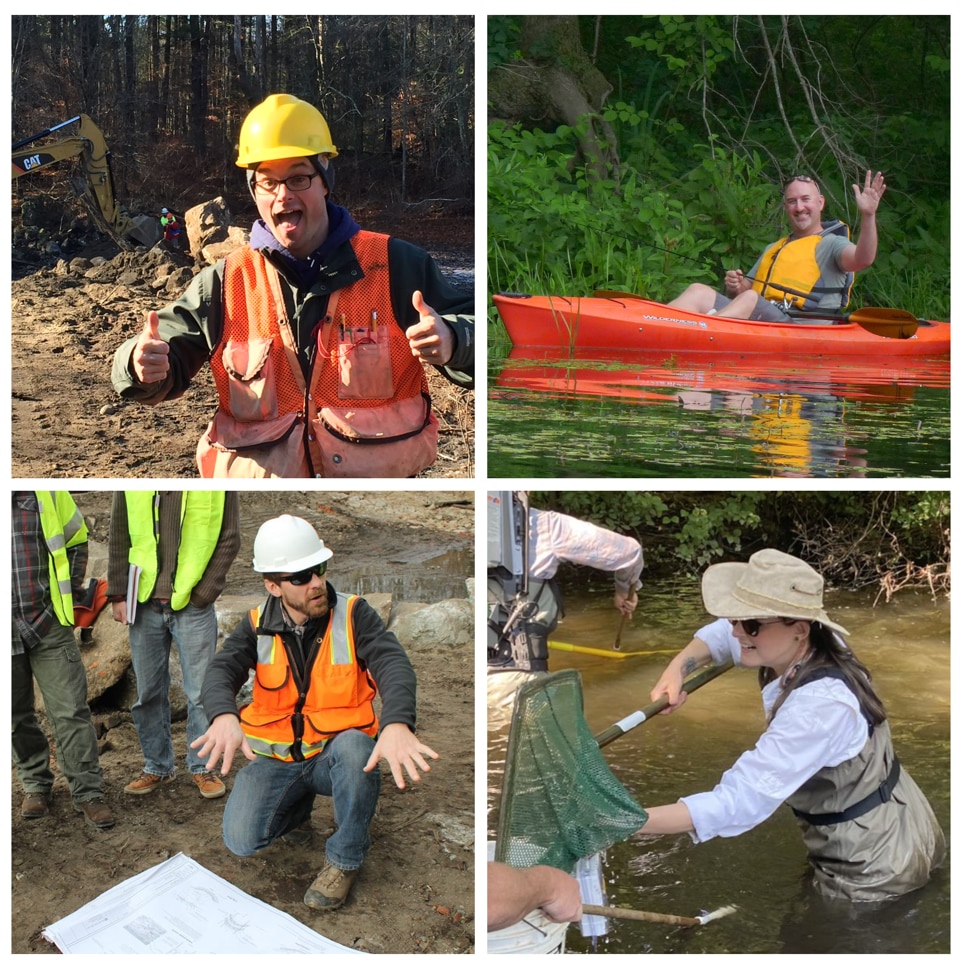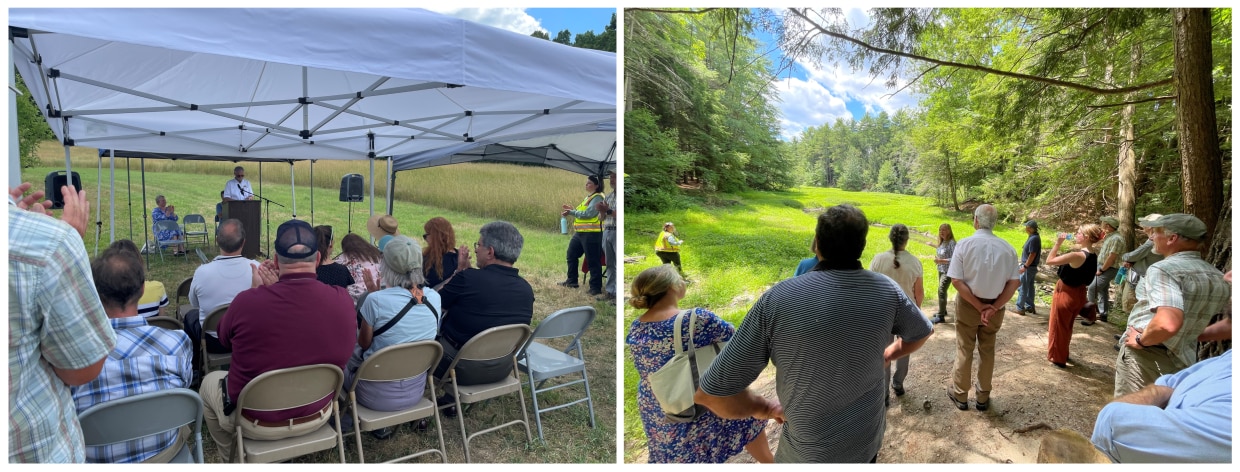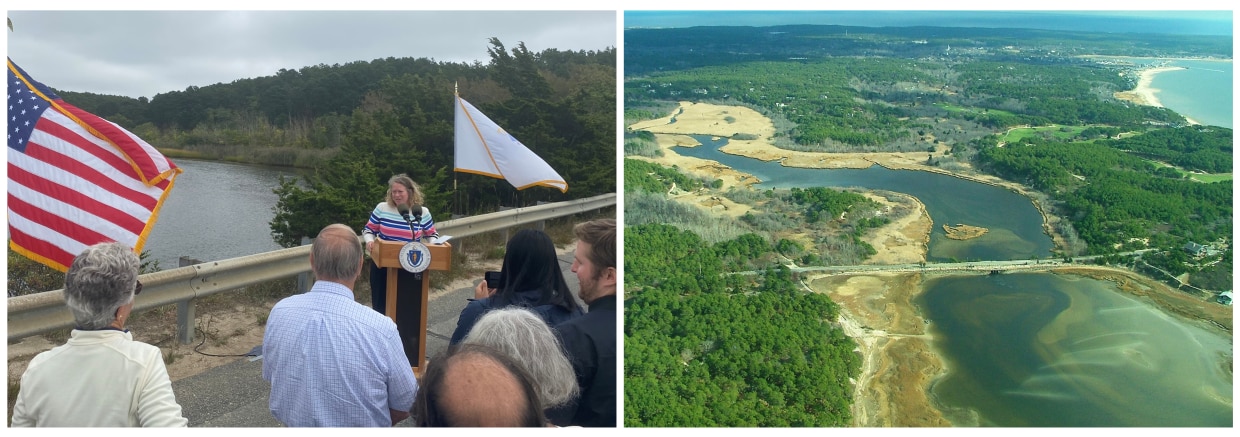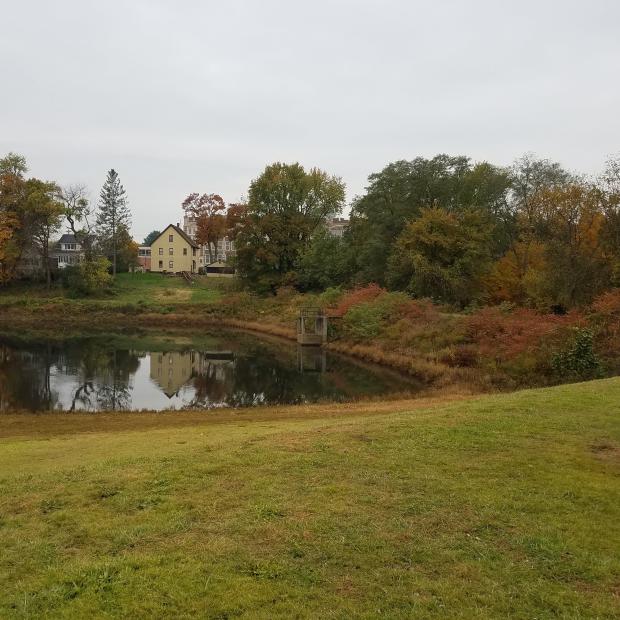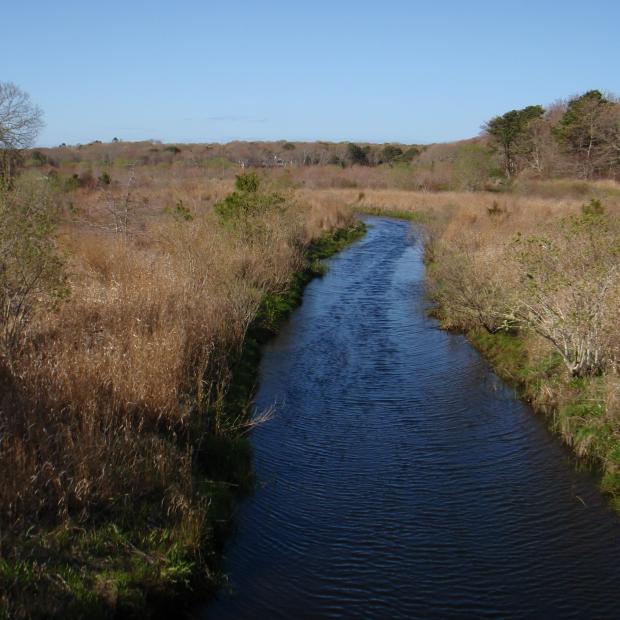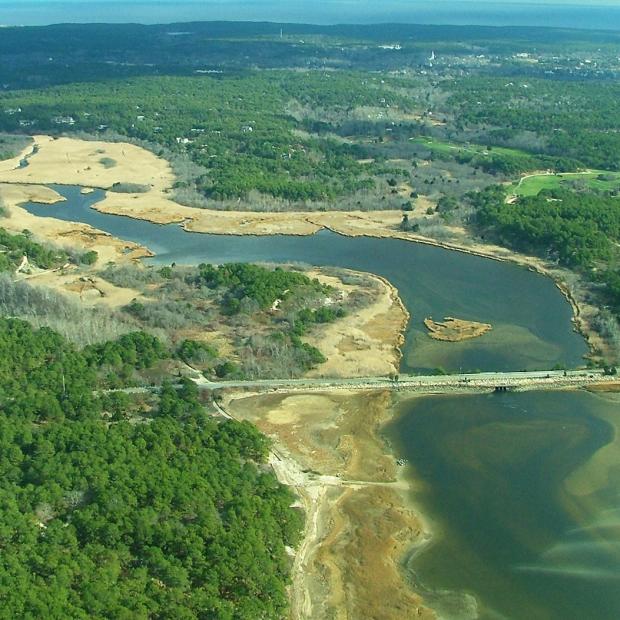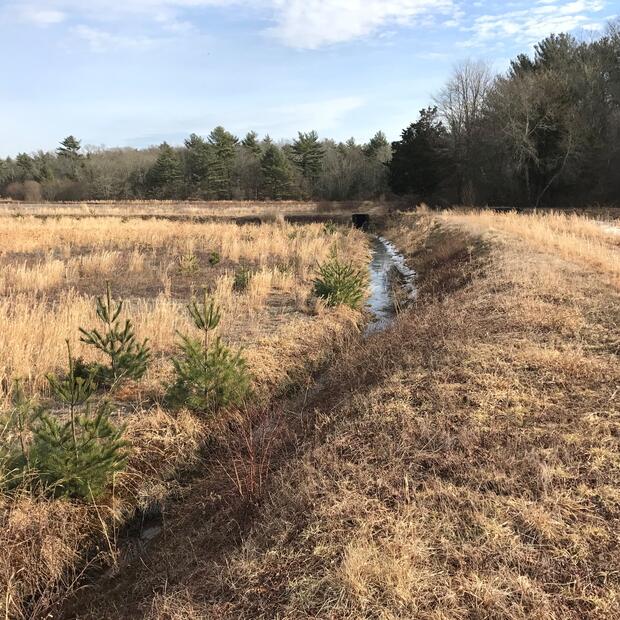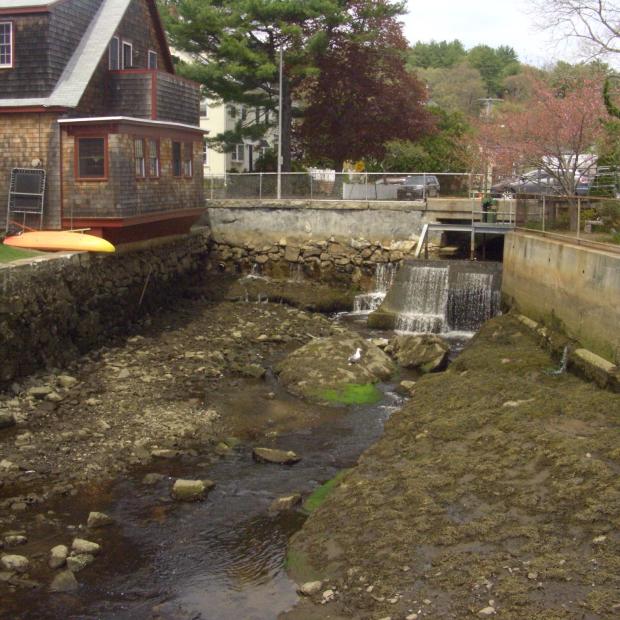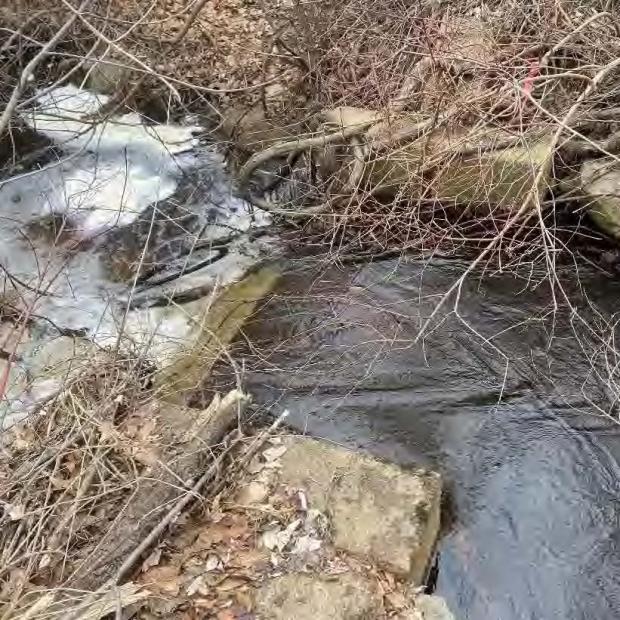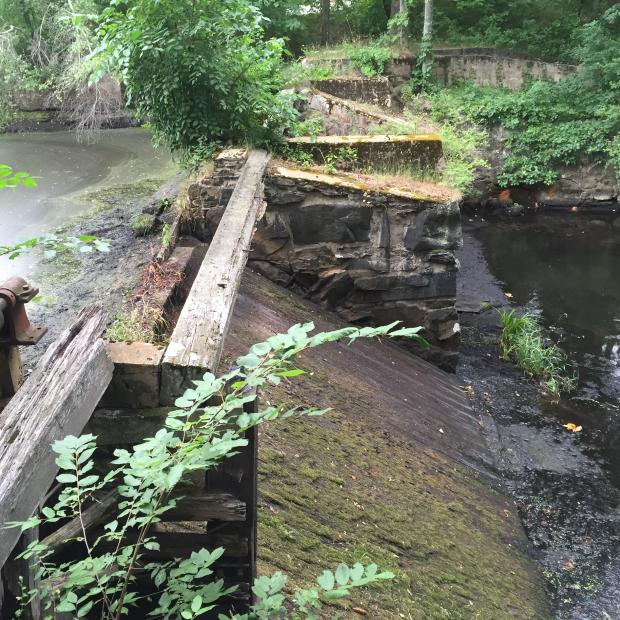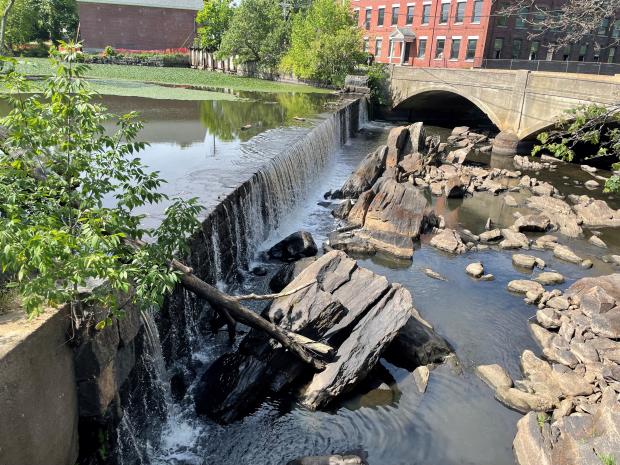Letter from the Director
Dear friends and colleagues,
I write to you after an exciting summer and early fall. DER received $35 million in American Rescue Plan Act (ARPA) funds to award to communities and partners through our Culvert Replacement Municipal Assistance Grant Program and our Priority Projects program. The ARPA funds will move some of our most exciting projects into construction, such as the Herring River Estuary Restoration Project in Wellfleet. With climate change growing ever more urgent, each completed project is a victory for people and nature. Read more in the Construction Look-ahead below.
On the bittersweet side, DER said farewell to Alex Hackman, Kris Houle, Jenny Sanders, and Nick Wildman in June. They each had a significant role shaping the Division, and we miss them. Fortunately, they are still working in Massachusetts in support of rivers, wetlands, and salt marshes.
DER staff are motivated by each other’s knowledge and passion; time spent in nature; and the opportunity to undo past damage to rivers and wetlands. Most importantly, however, we are motivated by you – our dedicated partners and friends. Thank you for all that you do to support river and wetland restoration in your communities and around the state.
Beth Lambert, Director
Staff Welcome & Farewells
Welcome Rhonda Battey!
Rhonda joins DER as our new Federal Grants Specialist. She was born in Memphis, Tennessee and raised in Boston since she was five years old. She gained professional experience working at the Boston Public Health Commission for 20+ years, developing her skills in administration, grants, and finance. She is excited to be starting this new journey at DER!
DER anticipates adding several new staff members to our team in the coming months. If you or someone you know is qualified and interested in working with us, keep an eye on our DER is Hiring! webpage.
Farewells
Last summer, DER said farewell to four members of the DER team. Nick Wildman and Alex Hackman had worked for the Division and its predecessor Riverways Program since 2007. Kris joined in 2014. All three played critical roles in establishing dam removal, cranberry bog restoration, and culvert upgrades as priority restoration practices in Massachusetts. Jenny Sanders joined DER in 2020 and established and led DER’s Restoration Partnerships Program, which builds the capacity of regional and watershed organizations to lead and support restoration. All four leave behind a legacy of healthy rivers and wetlands and dedicated partners. We wish them the best of luck and look forward to collaborating with them in their new roles at Dartmouth Natural Resources Trust (Nick), MassAudubon (Alex), U.S. Fish and Wildlife Service (Kris), and Massachusetts Water Resources Authority (Jenny).
DER Grants $4.6M to Restoration Projects
At an event in Pepperell earlier this summer, DER announced $4,635,000 in grant funding to support restoration projects through three DER programs. These projects strengthen community preparedness for large storms, improve climate-ready infrastructure, protect fisheries, wildlife, and river habitats, and restore floodplain habitat and flood storage capabilities. “Since coming into office, our Administration has taken a proactive approach to address climate change, and these ecological restoration grants will further our efforts to address aging infrastructure while enhancing outdoor recreation,” said Governor Charlie Baker in the associated press release. “Through these programs, we are investing in our communities’ future by strengthening the Commonwealth’s climate resilience, creating jobs, and improving access to nature for residents to benefit from.”
As part of the total funding awarded, $1,800,000 was granted to 13 municipalities through DER’s Culvert Replacement Municipal Assistance (CRMA) Grant Program. This program supports culvert replacement projects that improve river health and municipal roads in communities across the Commonwealth. The municipalities to receive awards included Belchertown, Dover, East Bridgewater, Egremont, Fitchburg, Franklin, Harvard, Hawley, Kingston, Pepperell, South Hadley, Swansea, and Washington.
Through DER’s Regional Restoration Partnerships Program, $600,000 was also awarded to three Regional Partnerships. This program was established in 2021 and builds the capacity of local and regional organizations to advance restoration work collaboratively. Funding was granted to the Buzzards Bay Coalition, Housatonic Valley Association, and Merrimack River Watershed Council to support their associated Partnerships through the program.
Finally, $2,200,000 was awarded to 15 projects through DER’s Priority Projects Program. This program is one of the vehicles by which DER pursues restoration projects that present the most significant ecological and community benefits. The 15 projects receiving awards included the Abbey Brook Restoration & Revitalization, Bayview Cranberry Bogs Restoration, Becker Pond Dam Removal, Broad Meadow Brook Restoration, Mattapoisett Bogs Restoration, Herring River Estuary Restoration, Ipswich River Restoration, Kinne Brook Culvert Replacement, Larkin Road Dam Removal, Marstons Mills Cranberry Bog Restoration, Mill Pond Salt Marsh Restoration, Third Herring Brook Restoration, Town River Restoration, Upper Coonamessett Wetland Complex Restoration, and the Ware River Restoration.
For more information, see the press release.
DER Grants $22.7M to Support the Herring River Estuary Restoration
At a celebration event in September, DER was proud to celebrate awarding $22,670,000 to the Town of Wellfleet for the Herring River Estuary Restoration Project.
Historically, the Herring River supported a vibrant, regionally-important estuary in the Gulf of Maine and hosted one of the most important diadromous fish runs on Outer Cape Cod. In 1909, a dike was constructed across the mouth of the river which effectively blocked tidal flow to the 1,110-acre estuary. This tidal blockage drained the salt marshes and transformed the estuary into one of Cape Cod’s most degraded natural resources.
For the past three decades, numerous organizations have been working toward restoration of the former estuary by advancing a very complex restoration project. The Herring River Estuary Restoration Project is the largest tidal estuary restoration project ever undertaken in the northeastern United States. This complex project will restore natural tidal flow to severely degraded wetlands. This work will improve water quality, enhance migratory fish access to spawning ponds, restore a significant area of shellfish habitat, and increase coastal resilience to the effects of climate change and sea level rise.
The award from DER will help to move this project to construction and leverages a $29 million award from the U.S. Department of Agriculture’s Natural Resources Conservation Service. Construction will start in late 2022 or early 2023. Learn more about this project and its history on the Friends of Herring River website.
For more about DER’s recent award to the Herring River Estuary Restoration Project, see the press release.
Construction Look-Ahead
DER has several projects that will be going to construction in the next few months. Here’s a look ahead at what projects will be breaking ground:
Abbey Brook Restoration and Revitalization: The Abbey Brook Restoration and Revitalization Project will restore Abbey Brook by removing two dams, replacing an undersized culvert, and “daylighting” a stream that is currently flowing through an underground culvert in Chicopee. This work will eliminate the risk to public safety posed by the aging dams, reduce flood risk, restore natural river processes, improve water quality, and enhance recreational opportunities. The first construction phase of this project—which includes removing one of the dams and making stormwater management improvements along that reach of Abbey Brook—will start in early 2023.
Cold Brook Restoration: The Cold Brook Restoration Project will restore a healthy, self-sustaining wetland and stream system within over 50 acres of former commercial cranberry bog and over 4,000 linear feet of river channel along Cold Brook in Harwich. This work will improve habitat for migratory and resident fish, as well as improve coastal resilience and water quality. This project will start construction in early 2023.
Herring River Estuary Restoration: The Herring River Estuary Restoration Project— the largest tidal estuary restoration ever undertaken in Massachusetts and the northeastern United States— will restore up to 890 acres of salt marsh and other estuarine habitats. This work will improve water quality, enhance migratory fish access to hundreds of acres of spawning ponds, restore habitat, and increase coastal resilience to the effects of climate change and sea-level rise. After several decades of pre-construction work, this project will start construction in late 2022 or early 2023.
Mattapoisett Bogs Restoration: The Mattapoisett Bogs Restoration Project will restore 57 acres of retired cranberry bogs in Mattapoisett. This work will restore connectivity on Tripp’s Mill Brook and improve habitat for rare species by restoring hydrology, controlling invasive plants, and introducing native plantings. This project will start construction in early 2023.
Sawmill Brook Restoration: The Sawmill Brook Restoration Project will address aging infrastructure and a tide gate that negatively impacts upstream coastal resources, water quality, and fish passage in Manchester. This work will reduce flooding, improve habitat, and benefit several important fish species. This project will start construction in early 2023.
Third Herring Brook Restoration: The Third Herring Brook Restoration Project will remove two low-head dams from Third Herring Brook, a Coldwater Fisheries Resource in Hanover. This work will restore ecological functions of the brook and improve wildlife passage. This project will start construction in late 2022 and is the last in a series of dam removal projects on Third Herring Brook. DER and partners have previously removed three downstream dams—Mill Pond Dam, Tack Factory Pond Dam, and Peterson Pond Dam in 2014, 2016, and 2020, respectively.
Town River Restoration: The Town River Restoration Project will remove the High Street Dam, replace the aging High Street Bridge over Town River, and protect and enhance surrounding infrastructure and public utilities in Bridgewater. This work will improve fish access to historic spawning habitat, reduce flood risk, eliminate the threat to public safety posed by sudden failure of the dam, and improve public access to the river. This project will start construction in late 2022.
Project Highlight: Talbot Mills Dam Removal
The Talbot Mills Dam, located in the Billerica Mills Historic District on the Concord River in North Billerica, was originally built in 1711 for power supply and fire protection for nearby buildings. This structure has an interesting and controversial history, and over the years it has caught the attention of locals, state and federal agencies, and even Henry David Thoreau, who studied the dam and its impacts on the river. Although the dam was important during the Industrial Revolution, it no longer serves its original purpose and stands as the primary impediment to fish passage in the Concord River.
Discussions to remove the dam have been ongoing for many years and are currently moving forward. Removal will provide a multitude of benefits including decommissioning aging infrastructure, eliminating ongoing maintenance and repair obligations, reducing upstream flood hazards, increasing climate resilience, restoring passage for migratory fish species, and improving water quality, aquatic habitat, and natural riverine processes. Removing the dam will also restore fish access to 29 miles of river.
In May 2021, the Talbot Mills Dam Removal was awarded status as a DER Priority Project. The project team is currently collecting data, performing analyses, and developing conceptual designs for the removal of the dam. Project partners include the private dam owner, the Massachusetts Division of Marine Fisheries, DER, National Oceanic and Atmospheric Administration Restoration Center, U.S. Fish and Wildlife Service, Massachusetts Department of Environmental Protection, OARS for the Assabet, Sudbury, & Concord Rivers, and the Merrimack River Watershed Council.
For more information about the Talbot Mills Dam Removal Project and its history, check out the Merrimack River Watershed Council’s webpage.
